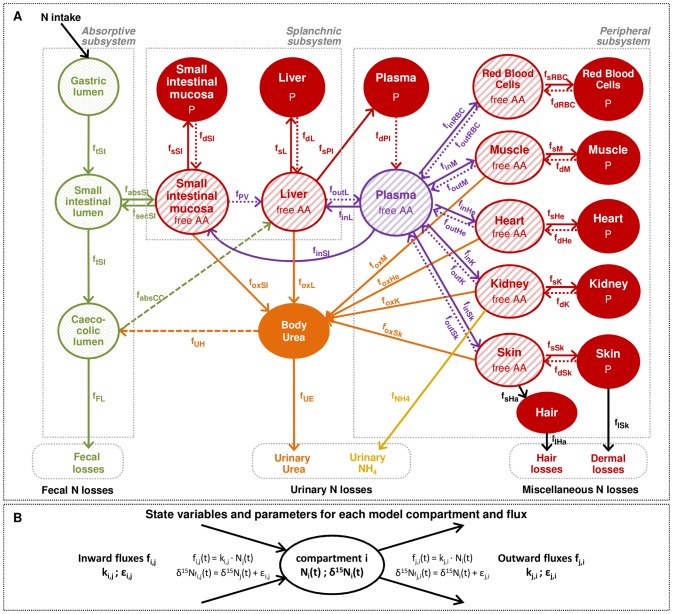Figure 2. Multi-compartmental model describing the body system of nitrogen fluxes and isotopic signatures in rats.
(A) Circles indicate model compartments, representing kinetically homogeneous nitrogen (N) pools and belonging to three subsystems: the absorptive (luminal N contents of the gastrointestinal tract), splanchnic (protein (P) and free amino acid (AA) fractions of small intestine and liver) and peripheral (P and AA fractions of plasma, muscles, kidneys, heart, red blood cells (RBC), skin and hair) subsystems. Arrows between compartments indicate N fluxes corresponding to N transfers and/or metabolic processes. The following fluxes are represented: gastrointestinal N exchanges (gastric emptying, ftSt; intestinal transit, ftSI; intestinal absorption, fabsSI; intestinal secretion of endogenous proteins, fsecSI; caeco-colonic absorption, fabsCC; body urea transfer toward the colon, fUH), N excretion (fecal losses, fFL; urinary urea excretion, fUE; urinary ammonia production and excretion, fNH4; hair losses, flHa; desquamation losses, flSk), tissue P synthesis (fsT, for a given tissue T), tissue P degradation (fdT), tissue AA catabolism through oxidation (foxT), AA transfers from plasma to tissues (finT) and from tissues to plasma (foutT), and AA transfer from the intestine toward the liver through the portal vein (fPV). Each oxidation flux foxT aggregates both the transfer of AA from tissue to liver and their subsequent deamination and use for urea synthesis in liver, and the total body urea production is equal to the sum of all tissue oxidation fluxes. fUH represents enterohepatic urea recycling, (i.e., the part of the urea produced that is not excreted in urine but recycled and hydrolysed by the colonic bacteria), leading to the production of ammonia that can be used either for microbial metabolism or salvaged (i.e., reabsorbed and made available for subsequent metabolic purposes). The amount of ammonia arising from urea hydrolysis that is reabsorbed from the colon is accounted for in fabsCC together with the absorption of other endogenous and dietary N compounds. (B) Each model compartment i is characterized by two state variables: its N size (Ni, mmol N.100 g BW−1) and its isotopic abundance (δ15Ni, ‰). Each N flux from compartment j to compartment i (fi,j) is characterized by two constant parameters: its reaction rate (ki,j, d−1) and its fractionation factor (εi,j, ‰). ki,j (kj,i) corresponds to the fraction of compartment j (i) that is transferred to compartment i (j) per day, and εi,j (εj,i) represents the isotopic effect associated with flux fi,j (fj,i). The k and ε parameters are used respectively to describe flux size (fi,j, mmol N.100 g BW−1.d−1) and isotopic enrichment (δ15Nfi,j, ‰).

